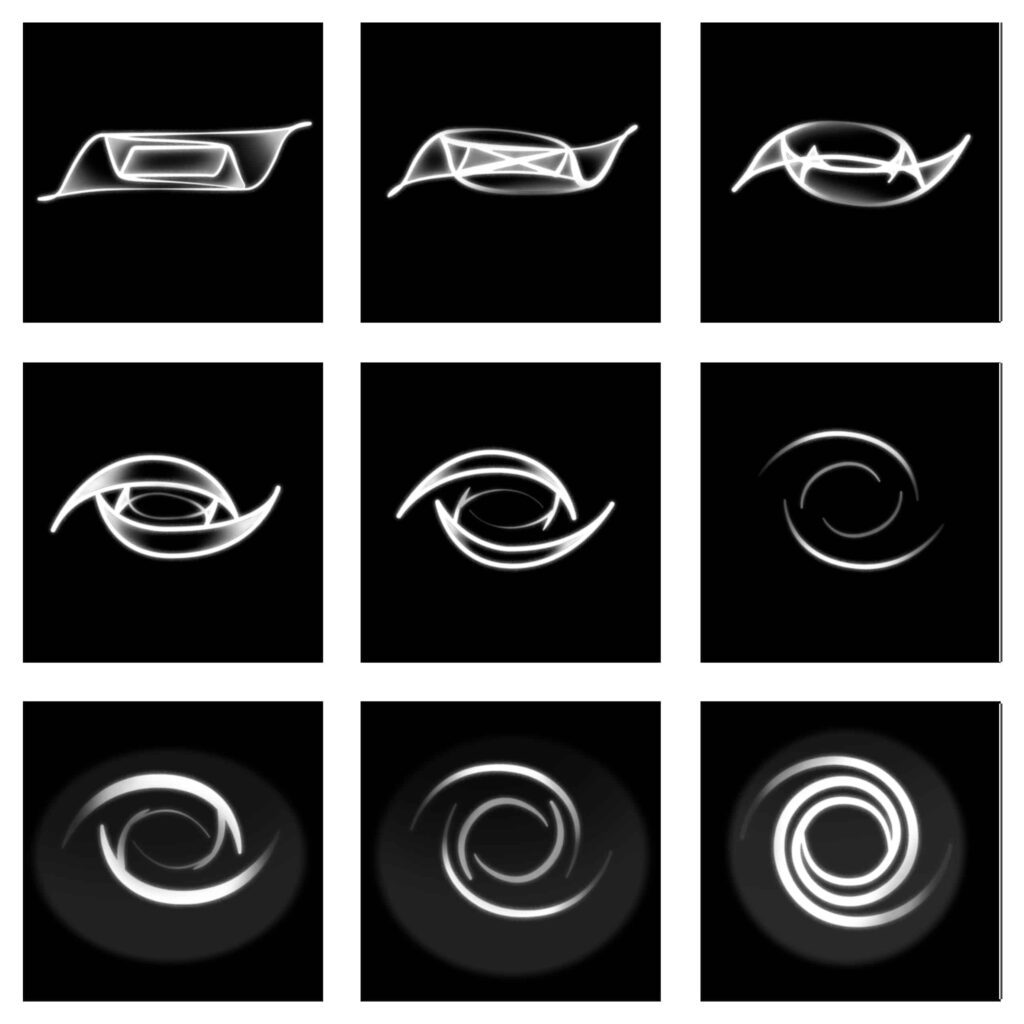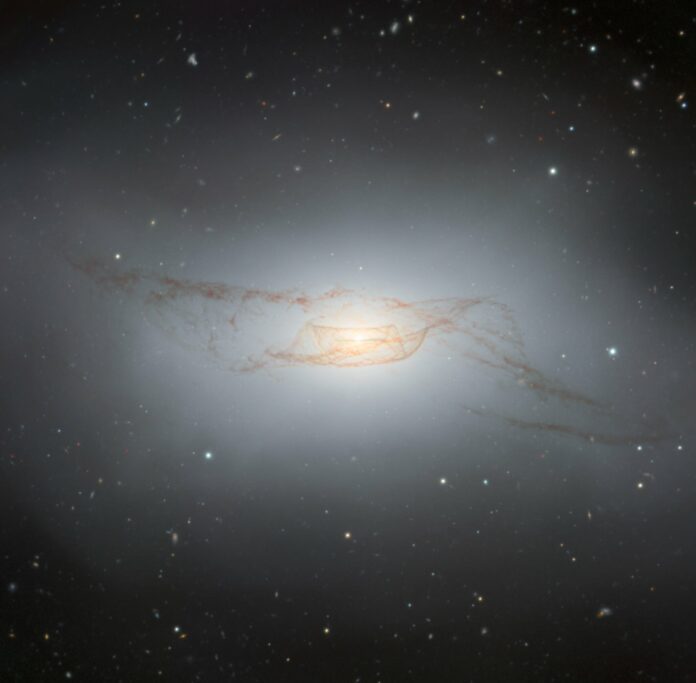Astronomers have revealed new details about a peculiar galaxy, NGC 4753, located about 60 million light-years away in the constellation Virgo. The galaxy, which displays a prominent and complex network of dust lanes that twist around its galactic nucleus, has long intrigued astronomers due to its irregular features that give it its ‘peculiar’ classification.
However, a team of astronomers led by Tom Steiman-Cameron, now a senior research scientist at Indiana University, have published a detailed study of NGC 4753. They found that its complicated shape is likely the result of a merger with a small companion galaxy. The astronomers hypothesize that NGC 4753 began as a normal lenticular galaxy but morphed into the more specific peculiar class after a merger with a nearby dwarf galaxy over a billion years ago.
Galaxy mergers occur when two (or more) galaxies collide, causing their material to mix and significantly altering the shape and behavior of each galaxy involved. In the case of NGC 4753, it is thought that the once standard lenticular galaxy merged with a nearby gas-rich dwarf galaxy about 1.3 billion years ago. The gas of the dwarf galaxy, coupled with bursts of star formation triggered by this galactic collision, injected the system with vast amounts of dust. The galaxy’s inward spiral due to gravity then caused the accumulated dust to smear out into a disk shape.
Steiman-Cameron and his team found that a phenomenon known as differential precession is responsible for NGC 4753’s entangled dust lanes. This varying, wobble-like motion results from the angle at which NGC 4753 and its former dwarf companion collided. It is the cause of the strongly twisted dust lanes we see wrapped around the galaxy’s luminous nucleus today.

The Gemini South telescope, one-half of the International Gemini Observatory operated by NSF’s NOIRLab, captured an incredibly detailed image of NGC 4753, further revealing the galaxy’s intricate dust lanes. According to Steiman-Cameron, if one were to view the twisted dusty disk from directly above it likely would look no different than a standard spiral galaxy. It’s due only to our fortuitous, nearly edge-on view that we are able to see the full scope of its tangled dust lanes, meaning these peculiar features may not be as rare in the Universe as they seem.
In a Universe populated by an astounding number of galaxies, NGC 4753 stands out as a remarkable object. Its fascinating features provide valuable insights into the dynamic nature of galaxies and their evolution over time. And while the Universe continues to surprise us with its diversity and complexity, NGC 4753 remains a captivating reminder of the wonder and mystery that lies beyond our world.
